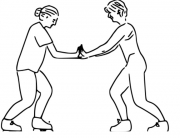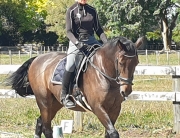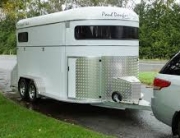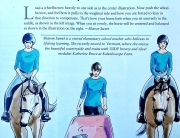CORE – how switching it on can help or impede
If a rider sits very relaxed, with little inner core muscle engagement, they can feel very heavy on the horse’s back.
If you engage your deep core muscles more, you support yourself more, which makes you feel lighter to the horse. Most horses will then lift their backs more, get rounder, and relax their poll and jaw.
As well as lightening the load you can emphasise the upswing of the horse’s back like a plunger action over a blocked sink. The thought of lifting the saddle, the saddle blanket and the horses back underneath you. This is especially evident in the rising trot.
How do you engage your core?
Try tightening your tummy muscles as if you were about to receive a blow to your tummy but keep breathing right down into the base of your abdomen.
Now have the feeling of pushing from your back and your insides against the wall you have made with your tummy. It is the same feeling you would get when pushing a heavy wheelbarrow through a muddy paddock.
When engaging your Core you will at first feel like you are working 10 out of 10 but as you get fitter your 10 out of 10 will diminish so that engaging your core will be easy and normal and you will be able to increase and diminish its intensity as you need to, like increasing core engagement in an upward transition.
And finally, notice what you do with your own lower jaw and tongue.
Do you clench your teeth or tighten any of your jaw muscles when you ride? Some people do things like that when they concentrate very hard. Any tension in our own body transfers itself to the horse, keep breathing to minimise tension remembering that breathing out is a good way of diminishing tension. Core is about body tone without tension.






Follow Us!